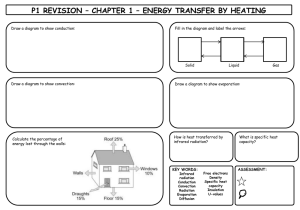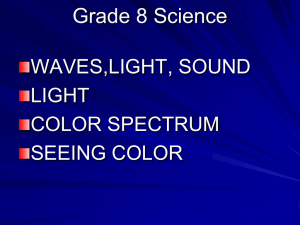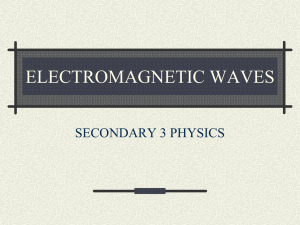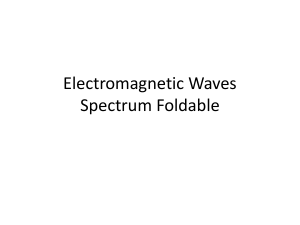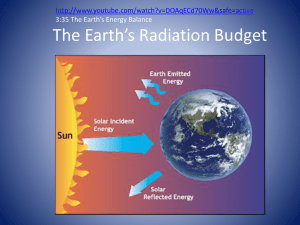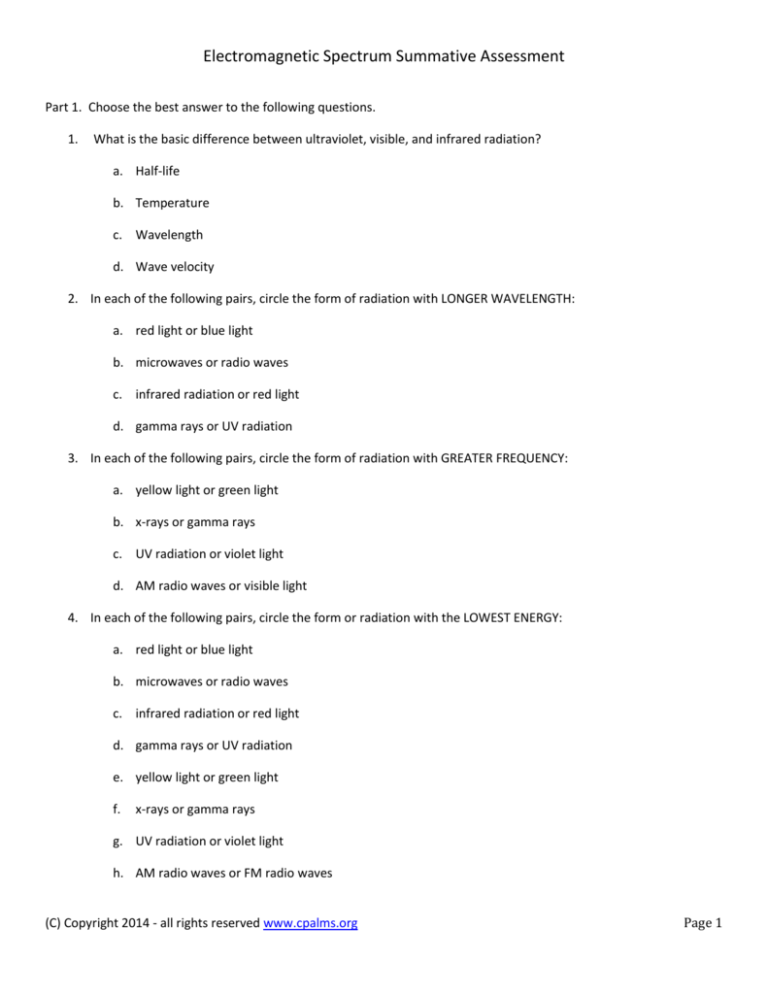
Electromagnetic Spectrum Summative Assessment
Part 1. Choose the best answer to the following questions.
1.
What is the basic difference between ultraviolet, visible, and infrared radiation?
a. Half-life
b. Temperature
c. Wavelength
d. Wave velocity
2. In each of the following pairs, circle the form of radiation with LONGER WAVELENGTH:
a. red light or blue light
b. microwaves or radio waves
c. infrared radiation or red light
d. gamma rays or UV radiation
3. In each of the following pairs, circle the form of radiation with GREATER FREQUENCY:
a. yellow light or green light
b. x-rays or gamma rays
c. UV radiation or violet light
d. AM radio waves or visible light
4. In each of the following pairs, circle the form or radiation with the LOWEST ENERGY:
a. red light or blue light
b. microwaves or radio waves
c. infrared radiation or red light
d. gamma rays or UV radiation
e. yellow light or green light
f.
x-rays or gamma rays
g. UV radiation or violet light
h. AM radio waves or FM radio waves
(C) Copyright 2014 - all rights reserved www.cpalms.org
Page 1
Electromagnetic Spectrum Summative Assessment
Part 2. Use the word bank to answer the following questions. Each word may only be used once.
(UV) Ultraviolet
light
radar
wavelength
visible light
violet
infrared
gamma
frequency
radio
red
X-Rays
Electromagnetic
Spectrum
1.
________________waves are used to penetrate solids and are used in doctor’s offices and airports.
2. ________________ is the distance between one point of a wave to the same point in the next wave.
3. ________________ is the number of waves per unit time.
4. ________________waves have a color spectrum known as ROYGBIV.
5. ________________waves are often used in heat lamps.
6. ________________waves are used by insects to locate nectar.
7. ________________have the shortest wavelength and the highest frequency.
8. ________________waves used to carry TV signals.
9. ________________are a little higher in frequency than radio waves and are used in communications.
10. ________________are at the highest energy of the visible light spectrum.
11. ________________are at the lowest energy of the visible light spectrum.
12. ________________The range of wavelengths or of frequencies over which electromagnetic radiation
extends.
(C) Copyright 2014 - all rights reserved www.cpalms.org
Page 2
Electromagnetic Spectrum Summative Assessment
KEY
Part 1. Choose the best answer to the following questions.
1. What is the basic difference between ultraviolet, visible, and infrared radiation?
a. Half-life
b. Temperature
c. Wavelength
d. Wave velocity
2. In each of the following pairs, circle the form of radiation with LONGER WAVELENGTH:
a. red light or blue light
b. microwaves or radio waves
c. infrared radiation or red light
d. gamma rays or UV radiation
3. In each of the following pairs, circle the form of radiation with GREATER FREQUENCY:
a. yellow light or green light
b. x-rays or gamma rays
c. UV radiation or violet light
d. AM radio waves or visible light
4. In each of the following pairs, circle the form or radiation with the LOWEST ENERGY:
a. red light or blue light
b. microwaves or radio waves
c. infrared radiation or red light
d. gamma rays or UV radiation
e. yellow light or green light
f.
x-rays or gamma rays
g. UV radiation or violet light
h. AM radio waves or FM radio waves
(C) Copyright 2014 - all rights reserved www.cpalms.org
Page 3
Electromagnetic Spectrum Summative Assessment
Part 2. Use the word bank to answer the following questions. Each word may only be used once.
(UV) Ultraviolet
light
radar
wavelength
visible light
violet
Infrared
gamma
frequency
radio
red
X-Rays
Electromagnetic
Spectrum
13. ___X-Rays_______waves are used to penetrate solids and are used in doctor’s offices and airports.
14. ___Wavelength___ is the distance between one point of a wave to the same point in the next wave.
15. ___Frequency____ is the number of waves per unit time.
16. ___Visible Light___waves have a color spectrum known as ROYGBIV.
17. ___Infrared______waves are often used in heat lamps.
18. ___UV__________waves are used by insects to locate nectar.
19. ___Gamma______have the shortest wavelength and the highest frequency.
20. ___Radio________waves used to carry TV signals.
21. ___Radar________are a little higher in frequency than radio waves and are used in communications.
22. ___Violet________are at the highest energy of the visible light spectrum.
23. ___Red__________are at the lowest energy of the visible light spectrum.
24. ___Electromagnetic Spectrum_____The range of wavelengths or of frequencies over which electromagnetic
radiation extends.
25.
Reference
http://quizlet.com/14850909/chemistry-chapter-5-flash-cards/
(C) Copyright 2014 - all rights reserved www.cpalms.org
Page 4


